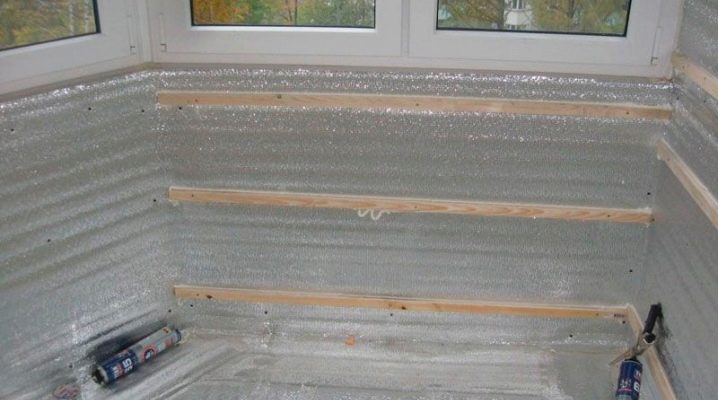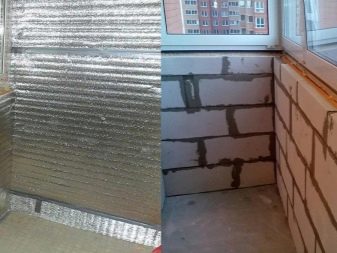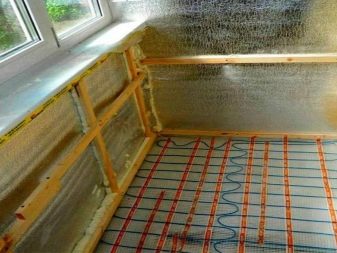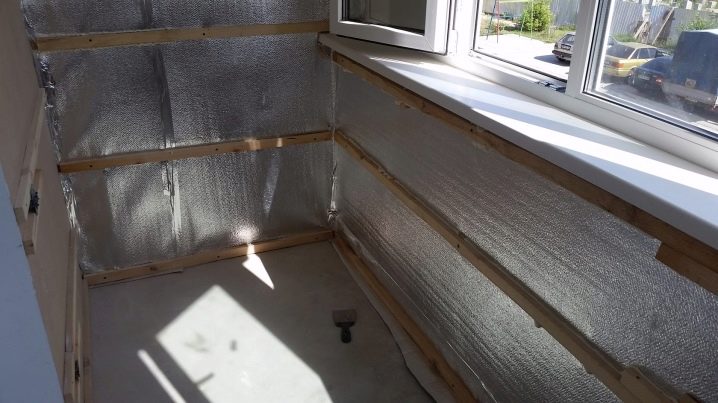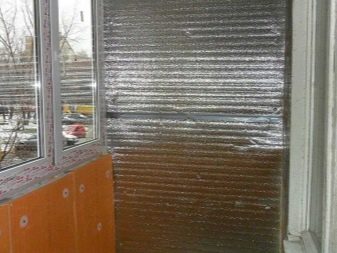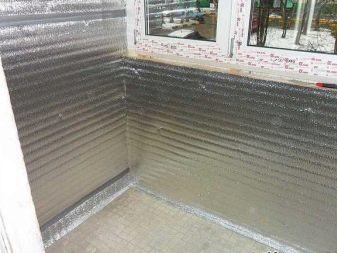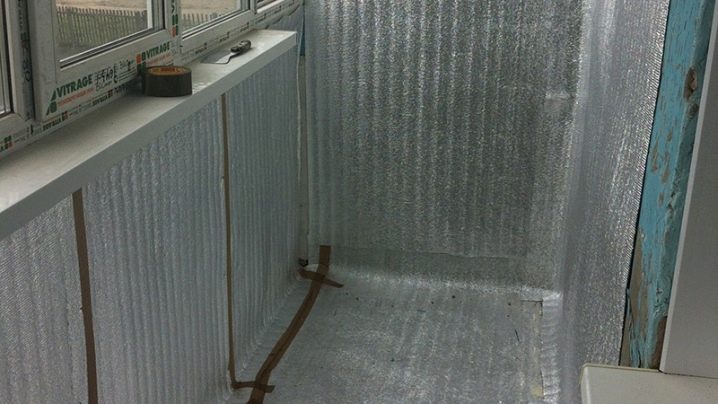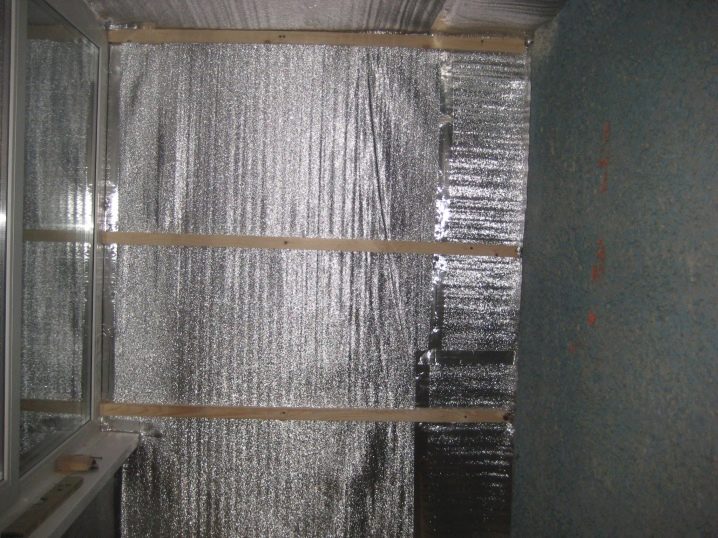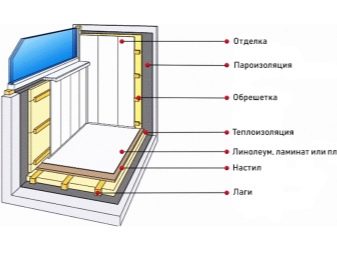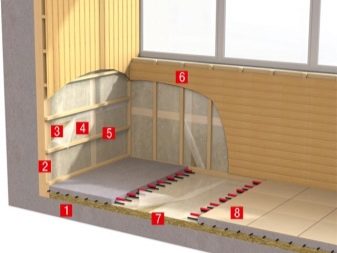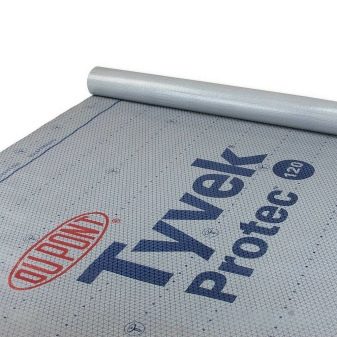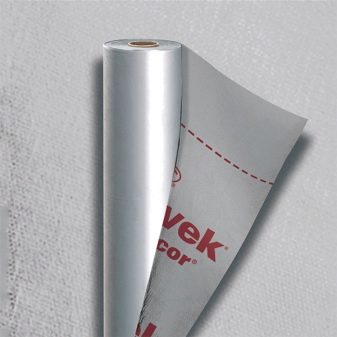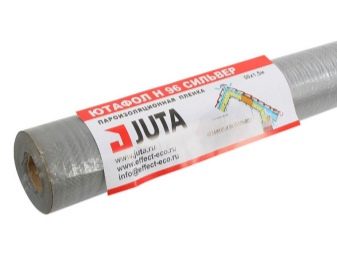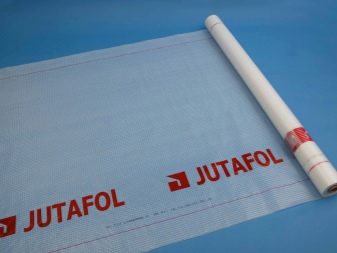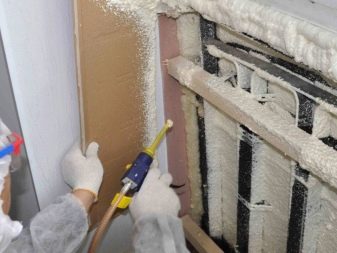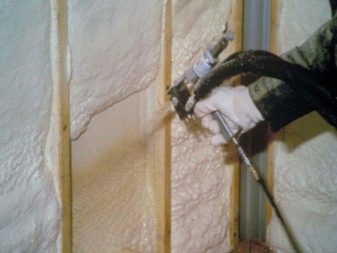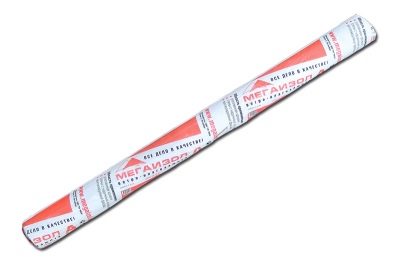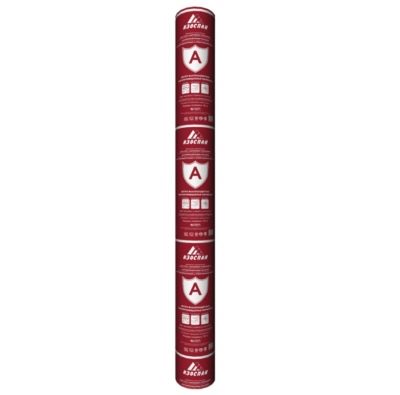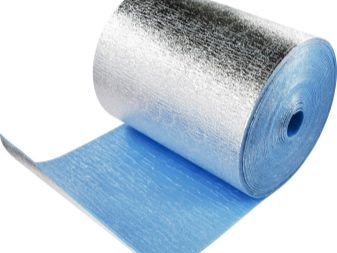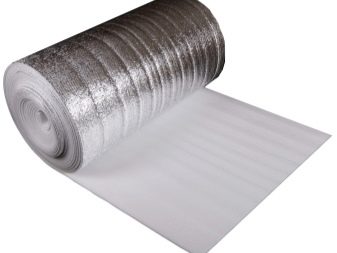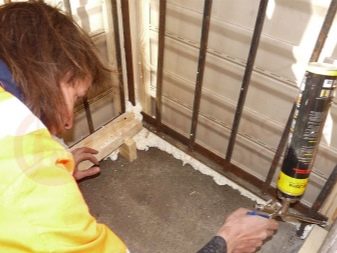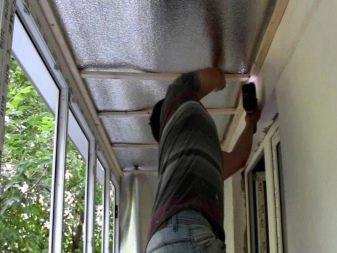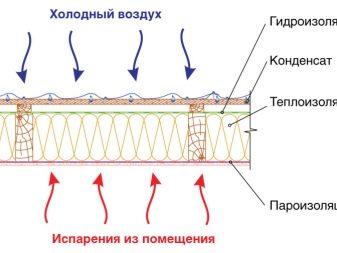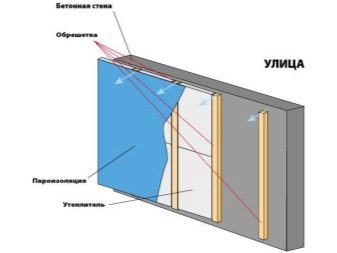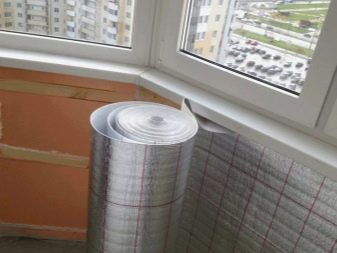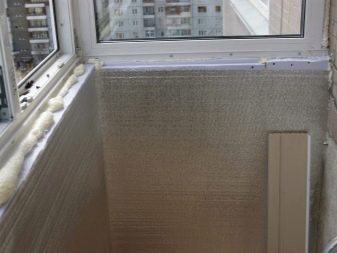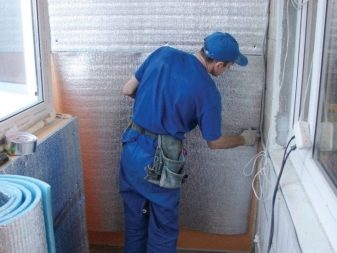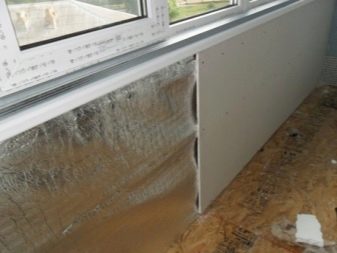Vapor barrier when insulating a balcony and loggia from the inside
Balconies and loggias are territories that become much more useful and functional if they are insulated from the inside. Many apartment owners resort to such manipulations. If a decision is made to insulate the balcony area, then it is necessary to attend to its correct vapor barrier. We will talk about this in this article.
Why do you need it?
Many people ask a reasonable question why a vapor barrier is needed when insulating a balcony and loggia from the inside. It should be borne in mind that this operation turns out to be very important, and it cannot be neglected. In order to fully assess the need for a competent vapor barrier, it is advisable to take into account the peculiarities of the climate and temperature in which the balcony or loggia will end up.
In the frosty season, the temperature on the equipped balcony will be higher when compared with the street. Often, the difference is significant, reaching 10-15 degrees (only in very rare and exceptional situations in conditions of balcony rooms are minus temperature values).
This will create an ideal environment for powerful steam condensation. This is where the need for high-quality vapor barrier arises. It is she who can act as a good protective barrier.
If we are talking about early spring or late autumn, then in this case, in the late afternoon, there is a noticeable cooling, even if it was sunny and warm during the day. Under the influence of such events, double-glazed windows usually begin to fog up and get wet, and when the temperature drops in the inside of a warm and glazed balcony room, condensation collects on the windows. As you can see, condensation on balconies and loggias is formed very often, so high-quality vapor barrier is simply necessary.
It seems to some people that vapor barrier is not so important on the balcony in autumn or cold spring, especially in comparison with the winter months. But this is completely wrong.
It must be remembered that, in addition to the effect of condensation, there is also the most common vapor absorption by coatings with a porous structure. That is why vapor barrier is still an important and necessary component of insulated square meters.
The only exception to these rules is the intense heat that persists during the summer seasons. These are the periods when the sun beats down and dries up the balcony cladding especially strongly. In such cases, vapor barrier brings more problems than benefits, since it will prevent the release of excess moisture, which has already accumulated in the insulation materials.
Review of materials
For the vapor barrier of a balcony or loggia, when fixing the insulation inside, you can use different types of materials. High efficiency can be demonstrated by specialized membranes or high quality films. Each of the options has its own distinctive characteristics and features that must be taken into account before choosing a specific option.
Let's take a closer look at good vapor barrier materials suitable for installation on balconies and loggias.
Membranes
Very often, special membranes are used for high-quality vapor barrier of balcony rooms. They come in several different types. Let's get to know each of them.
-
Pseudodiffusion (or perforated). Simply put, these are the same reinforced films or special fabrics of a combined type that have small holes along their entire surface.Their vapor permeability coefficient reaches about 300 g / sq. m. The types of membranes under consideration are very often used when arranging waterproofing under roofing materials on the roof. Among the main disadvantages of perforated products can be noted the possible penetration of dust directly into the perforation, or clogging of holes with frost against the background of cold seasons.
-
Diffusion (porous). The structure of these membranes is more like fiber. The pores in these specimens are not clogged as much as in the case discussed above. That is why porous options are preferable if it is necessary to form the correct air gap over a warm layer. The indicator of the vapor permeability coefficient in this case reaches a level of 1000 g / sq. m.
-
Superdiffusion (multilayer). Membranes of this type are folded into a certain number of layers. They are not subject to clogging because there is no perforation in them. Such an element of vapor barrier is ideal for the competent arrangement of balconies in areas where there is an increased level of dustiness. Neither dirt nor excess moisture will be able to penetrate into multilayer materials, and therefore into the premises themselves. The vapor permeability coefficient of such specimens reaches 900-2500 g / sq. m.
The best quality and most practical are multilayer membranes made up of 3 layers. But these items are expensive. More often people choose two-layer membranes.
Films
Today, many large brands have taken hold on the market, producing high-quality vapor barrier films that are excellent for installation on a balcony or loggia along the course of their insulation. Let's find out about some of the current options.
-
Tyvek from DuPont. A film with increased elasticity and strength characteristics. This material can be used in almost any climatic conditions.
This film provides for special layers, due to which it is not too stuffy on loggias and balconies.
- Yutafol. Excellent Czech development. Such films do not let moisture through their structure at all, and all condensate easily evaporates from the walls and floor, without bumping into obstacles.
- Penoizol. A popular and frequently used type of interlayer. In many cases, it is it that is used for high-quality vapor barrier of balconies and loggias. Due to the thoughtful composition, the material can easily retain excess moisture, and then evaporate for a certain time.
- Delta. This is a high quality film from a renowned German manufacturer. It is characterized by increased strength indicators, as well as a long service life.
- Megaizol. A material with excellent insulating properties. It can be glued to the ceiling, walls or floors without any problems. Laying this film is required over the installed insulation fiber. A special metallized coating protects very well against moisture and moisture, and a high-quality inner layer retains all vapors in the inner part, preventing them from remaining on the loggia.
- Izospan. This film serves as both a heater and a vapor barrier on balcony rooms and loggias. The material demonstrates excellent insulating ability, and also does an excellent job of removing all excess moisture from any internal structures.
- Penofol. It is characterized by good thermal conductivity, and is also a fairly flexible, waterproof material.
Mounting
Laying the vapor barrier when arranging a balcony or loggia can really be done with your own hands. There is nothing prohibitively difficult in such works, but it is better to adhere to the step-by-step instructions, if the master has not previously encountered such procedures. We will find out in stages how exactly the installation of vapor barrier materials on the balcony square or loggia should take place.
Preparatory work
The preparatory process begins with competent insulation of the balcony area. Several strips of the selected vapor barrier should be laid on a surface free of all debris and dirt. General cleaning is required in the room. All unnecessary items must be removed. It is recommended to dismantle the door frame and sill.
All cracks should be repaired with cement and allowed to dry completely. Fastening of protective films is carried out using a specific technology:
-
if the installation is carried out on the outside, then the insulation must be installed there;
-
all internal installation work will require fasteners for pre-laid mineral wool or other insulation material;
-
when decorating the ceiling base, the vapor barrier film is attached directly over the insulation;
-
if there is a woven side on the vapor barrier, then this part should remain on the outside, and the foil half on the inside.
Installation features
Let's figure out the main intricacies of installing a vapor barrier.
-
When connecting 2 strips of vapor barrier film, it is necessary to overlap so as not to collide with empty spaces.
-
The edges of the film are usually marked with factory markings. It is allowed to use it as a kind of reference point so that you can easily determine the desired overlap indent. The joints should be glued with a special metallized tape.
-
A coating that has a denser texture (such as polyethylene foam) will require precise butt seating.
-
The joints located near window and door openings during the fixing of membrane-type films must be thoroughly ironed for maximum tightness. It is allowed to use double-sided metallized tape or double-sided self-adhesive tape.
-
The membrane-type film can also be fixed using a rail, nails or a special mounting stapler.
Film stretching
It seems to many inexperienced craftsmen that the stretching of the vapor barrier material on the balcony should be carried out to the maximum in order to achieve perfect evenness, as well as to save consumables. But this opinion is erroneous, since temperature fluctuations are reflected in the state of the film material, because of which it begins to shrink. If a certain margin does not remain, then the insulating coating can simply crack and break.
However, large sagging during stretching should also be avoided. Permitted fluctuations should be no more than 2 centimeters.
General recommendations
Let's get acquainted with some recommendations regarding the installation of a vapor barrier when insulating a balcony and loggia from the inside.
-
For the vapor barrier of a loggia or balcony area, it is recommended to use only the best materials. They must be strong enough, strong and durable. It is not necessary to save on the purchase of such components, so that later you do not face more serious problems.
-
When laying vapor barrier material, it is very important to ensure that the joints are correct. They shouldn't be violated. The tightness must be perfect. Otherwise, steam can easily enter through the cracks, and then freeze under the lining of the warm material. As a result, this will lead to a rupture of the insulation under the mass of ice and snow.
-
We must not forget about the overlap when fixing vapor barrier materials. The optimum overlap is approximately 15 cm.
-
It is worth paying attention to the fact that the dew point and temperature value at which condensate accumulates on the vapor barrier will be 7 degrees. Under these conditions, moisture will condense even against the background of more significant temperature values, reaching 8-10 degrees, if all the right conditions are available for this.
-
Membranes are completely impermeable materials, therefore it is very important to arrange the necessary ventilation gaps. They should be left in the areas between insulating and finishing materials. Excess condensation will easily drain out through the gap left.
-
All installation work related to the vapor barrier of a balcony or loggia should be carried out strictly according to technology. If a home craftsman is not confident in his abilities, or is afraid to make serious mistakes, it is advisable to turn to professionals. Of course, this will entail certain expenses, but all the work will be done with high quality, so in the future there will be no unnecessary problems.
For the vapor barrier on the loggia, see the video below.
